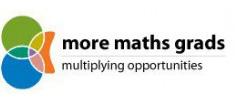Interpretation of standard functions
This set of resources contains activities which provide students with the opportunity to plot and interpret graphs including:
- reciprocal graphs,
- exponential graphs
- graphs of non-standard functions in real contexts,
and to find approximate solutions to problems such as simple kinematic problems involving distance, speed and acceleration.
Visit the secondary mathematics webpage to access all lists.
- ALL
- Information sheet
- Group work
- Activity sheet
Information sheet
What's the Point of... Maths
This booklet has been written to help answer one of the common questions heard in mathematics classrooms, and even once in the Houses of Parliament - what's the point of learning all this maths stuff?
The logic and organisation of a mathematical brain helps with problem solving and each of the pages in this booklet deals with an area of mathematics. It introduces ideas that could be explored further by students, including how exponential growth can be used to model the progress of disease and change and even how exponential decay can be used to date ancient objects. There are no resources or lesson plans but excellent ideas for development to challenge this perennial question.
Group work
Interpreting Distance-Time Graphs with a Computer A5
This resource contains activities designed to enable students to interpret linear and non-linear distance-time graphs using the computer programme “Traffic”. This program provides a simple yet powerful way of helping learners to visualise distance–time graphs from first principles. The program generates situations involving traffic moving up and down a straight section of road. It then allows the user to take ‘photographs’ of this situation at one-second intervals, places these side-by-side, and then gradually transforms this sequence of pictures into a distance–time graph. In this way, direct correspondences between speeds and gradients are obtained.
Learners are asked to describe situations, and draw and interpret distance–time graphs. Later, examples are offered that involve cars travelling at non-uniform speeds
These materials exemplify the ideas and approaches adopted in the Standards Unit pilot. To get best value from them use them in association with the guidance and other materials in Improving Learning in Mathematics: Challenges and Strategies.
Activity sheet
Language of Functions and Graphs
This book is now regarded as a classic on the teaching and assessment of graph interpretation skills.
The Language of Functions and Graphs focuses on developing fluency in using various mathematical representations to describe and analyse the real world, and on the teaching tactics needed to handle student discussion in groups and with the whole class.
Unit A of the classroom materials tackles the interpretation and sketching of scatter graphs and line graphs - an area where most pupils need help if they are to go beyond the plotting and reading of points to the global meaning of the graph. This material is accessible to a wide range of abilities.
Unit B develops modelling skills - the search for patterns in a realistic situation and their expression in verbal, graphical and algebraic forms: this unit is more challenging.
Each unit takes about two weeks of mathematics time. In addition there is a collection of further problems. There are a number of assessment tasks with marking schemes for GCSE but this may need updating for the current curriculum and assessment criteria. Some of the examples are quite complex and may need updating. However, the principles of focus on interpretation and using mathematics to model and represent real life situations will help students apply their understanding of mathematics in increasingly complex and unfamiliar situations.
Interpreting Distance – Time Graphs A6 *suitable for home teaching*
This resource contains activities designed to enable students to learn to interpret and construct distance–time graphs; relating speeds to gradients of the graphs and accelerations to changes in speeds. Students have often constructed distance–time graphs before. However, experience shows that many still interpret them as if they are pictures of situations rather than abstract representations. In addition, they also find it difficult to interpret the significance of the gradients of these graphs. In this session, students begin by discussing a question that is designed to reveal common misconceptions about distance–time graphs. They then work in groups to match descriptions, graphs and tables. As they do this, they will interpret the meaning and begin to link the representations together.
These materials exemplify the ideas and approaches adopted in the Standards Unit pilot. To get best value from them use them in association with the guidance and other materials in Improving Learning in Mathematics: Challenges and Strategies.
Modelling a Test Drive
This resource contains activities which provides the opportunity for students to fit functions to linear and quadratic graphs. It is assumed that students will already have some knowledge of linear and quadratic functions and their graphs, which are used to compare models and comment on their suitability. A slide show is included, which can be used to introduce the activities, and data for speed and braking is provided in an Excel spreadsheet.
The first question on the student sheet requires them to find a linear function using the intercept and gradient of a linear graph. For later questions they need to be able to recognise the shape of quadratic curves, and know how to solve simultaneous equations.
Resources include pupils’ activity and data sheets, teachers’ notes, presentations and answers.






